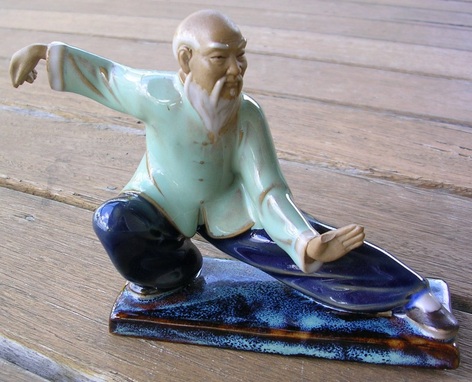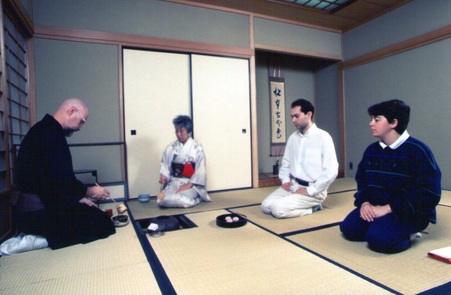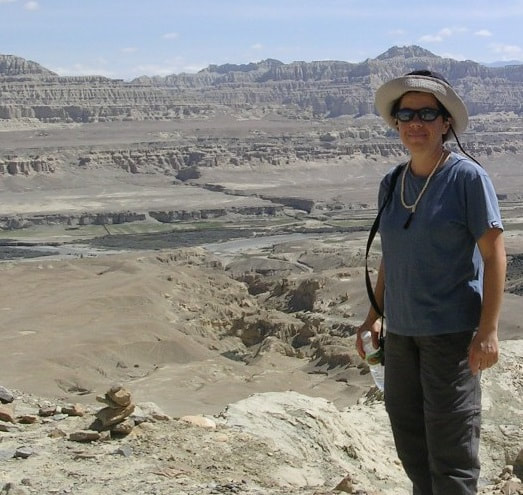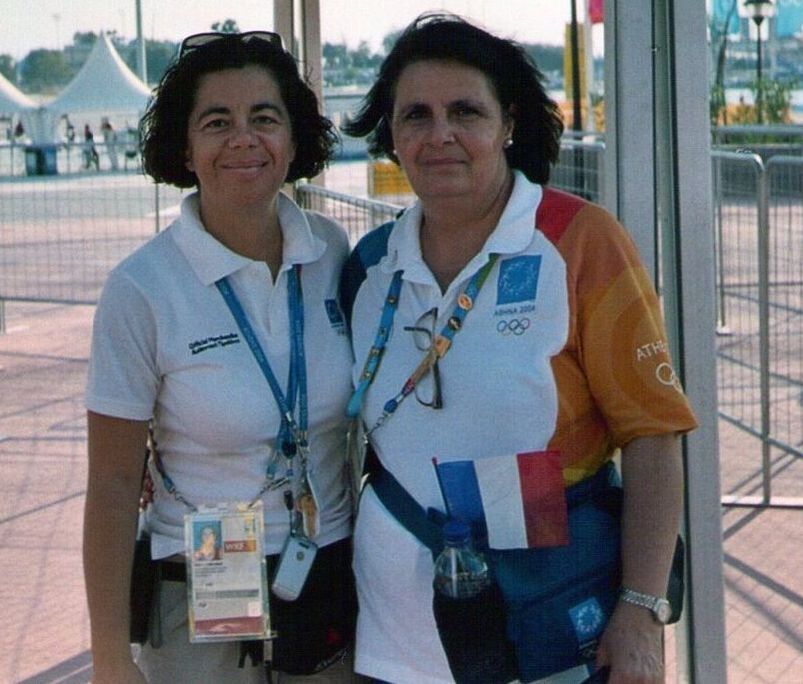|
“Excuse me,” I said, leaning over to the young man at the next table. “What does that sign say?” “There’s a free yoga class here tonight from 6pm,” he translated for me. “You’re welcome to come along.” Perfect timing, I thought. It’s just what I need to clear the jet lag after arriving in Lima, Peru earlier that day following a 17-hour flight. Yoga in Spanish; now there’s a new experience. “Hola.” I nodded to the assembled group as I lay down on my towel at the back of the room. I eagerly glanced at our Spanish-speaking instructor as the class began. Although I didn’t understand what she was saying, I instantly recognized the cat pose, then the downward facing dog and the camel pose. Fortunately, yoga poses are cross-cultural; they’re the same no matter what they’re called in other languages. No one therefore suspected I was a foreigner as I kept up with the group during that hour-long class (except for that English-speaking young man). More importantly, though, it helped clear my jet lag. It wasn’t the first time I’d participated in a foreign language relaxation class. While living in Japan in the early 90s I discovered a weekly Tai Chi group consisting of a lively bunch of obaachans (grandmas), who happened to be practicing the same style I learnt in Australia a few years earlier. Apart from our friendly “konnichi wa” at the start of class and the “sayonara” at the end, words weren’t required as we floated along with the Tai Chi music, gracefully moving through the prescribed motions. If I couldn’t remember the next move, I’d simply follow their lead. In addition to the health benefits, it allowed me to maintain a weekly practice while living in another country, plus the extra bonus of interacting with the locals. When I relocated to Greece two years later I found another class in Athens which - again - taught the same Tai Chi style. The instructor fortunately spoke English and was able to help me refine my technique, although she occasionally conducted the class in Greek for the non English speaking students. By the time I returned to Australia in late 1996, I was able to continue my Tai Chi practice as though I hadn’t been away at all. The benefits of Tai Chi 1. Activates the flow of chi (energy) along the meridians (energy pathways). 2. Maintains health and vigour of the body and mind. 3. Strengthens the internal organs. 4. Exercises all the joints and muscles. 5. Manages stress by promoting a balanced and relaxed attitude. 6. Prevents occupational diseases such as repetitive strain injury. 7. Promotes postural awareness. 8. Provides the base for other martial arts. - from 'Tai Chi Qigong for stress control and relaxation' by Gary Khor I switched from Tai Chi to yoga in 2000 as I felt I needed a more physical practice to counterbalance the unhealthy effects of my desk job. I therefore had three years regular practice under my belt when I ended up in the above mentioned Spanish yoga class in Peru. Don't try this at high altitude Yoga at high altitude is quite breathtaking. Literally. A simple exercise such as Salute to the Sun leaves you wheezing when attempting it at 3800m. For a start, there are 40 percent less oxygen molecules in the atmosphere. While trekking in the Andes in Peru in 2003, two fellow yoga enthusiasts suggested we have afternoon sessions at our campsites. Our first attempt was brief and left us gasping for oxygen. We quickly abandoned this unrealistic venture as we were trekking to higher altitudes in the ensuing days. Unless you’re fully acclimatized, yoga is best optimized at sea level. The Zen of tea The simple act of serving tea and receiving it with gratitude is the basis for a way of life called Chado, the Way of Tea. – from ' Tea Life, Tea Mind' by Soshitsu Sen XV I like to immerse myself in the cultural practices of the places I visit, as it’s the best way to learn about that country and its people. I therefore enrolled in a Japanese tea ceremony class soon after I arrived in Japan in 1992 (crikey, that’s 20 years ago). I quickly discovered it was more than just sitting around on tatami mats drinking powdered green tea and eating Japanese sweets, although we did that, too. It became my weekly meditation ritual where I prepared my mind, cleared my thoughts and focused on providing heartfelt hospitality and drinking tea in a congenial atmosphere. The Way of Tea, it turns out, builds character through self discipline, much like a martial art. Or Tai Chi. I loved the formal ceremony and etiquette around the preparation of tea. As hosts, we learnt how to set up the utensils, where to sit, how to place the tea into the bowl and how to serve it. As appreciative guests, we politely enquired about the room setting, utensils, the beauty of the season and the calligraphy on the hanging scroll. It was two hours of meditational bliss which I refused to give up, despite repeated teaching offers; it was my well-needed time out from the frenetic pace of living and working in Tokyo. I brought back a portable tea set with me and one day plan on having my own little Japanese tea room where I can sit on a tatami mat drinking green powdered tea while overlooking my Zen garden. I’ll be sending out formal invitations for you to join me. I attribute my current peaceful state of mind to those early decades of Tai Chi, yoga and meditation. They've made a huge difference to how I view and interact with the world these days: I don't stress, fret or panic anywhere near as much as I used to and am happy to go with the flow. Oh, and a bonus benefit is maintaining a youthful appearance... Without going out of the door One can know the whole world; Without peeping out of the window One can see the Tao of heaven. The further one travels The less one knows. Therefore the Sage knows everything without travelling; He names everything without seeing it; He accomplishes everything without doing it. - from the 'Tao Te Ching' by Lao Tzu
8 Comments
Hari Kotrotsios
21/3/2012 03:44:09 pm
Bernie, a Zen gift is the perfect present to get someone when you don't know what to get them.
Reply
21/3/2012 11:53:20 pm
I knew I'd missed something along the way, Hari. I'm sure that Tai Chi, green tea and meditation would have been better cultural experiences for me than hanging out in dark bars.
Hari Kotrotsios
22/3/2012 06:20:29 am
Peter, everything in moderation: green tea and meditation vs dark bars is like yin and yang. You need both to have a balanced cultural experience.
Reply
Robyn
23/3/2012 08:13:00 am
Beautiful story Hari. It left me feeling peaceful and relaxed, and I'm soooo looking forward to that Tea Ceremony.
Reply
Hari Kotrotsios
23/3/2012 09:01:18 am
Robyn, Tai Chi has been referred to as moving meditation - it's a great way to get into that peaceful zone as you float through each movement.
Reply
Hari Kotrotsios
13/7/2012 03:24:45 am
Thanks for stopping by!
Reply
Your comment will be posted after it is approved.
Leave a Reply. |
 Portuguese Camino 2019 Portuguese Camino 2019
Travel blogs
New Zealand 2008 Tibet 2007 New Zealand 2006 Melbourne 2006 United Kingdom 2004 Athens Olympics 2004 Peru 2003 Beijing to Athens 1994 Nepal 1991 Categories
All
Archives
December 2019
|
|
I acknowledge the traditional Custodians of the land on which I work and live, the Gubbi Gubbi / Kabi Kabi and Joondoburri people, and recognise their continuing connection to land, the waters and sky. I pay my respect to them and their cultures; and to Elders past, present and emerging.
|
© 2024 HARI KOTROTSIOS
|




